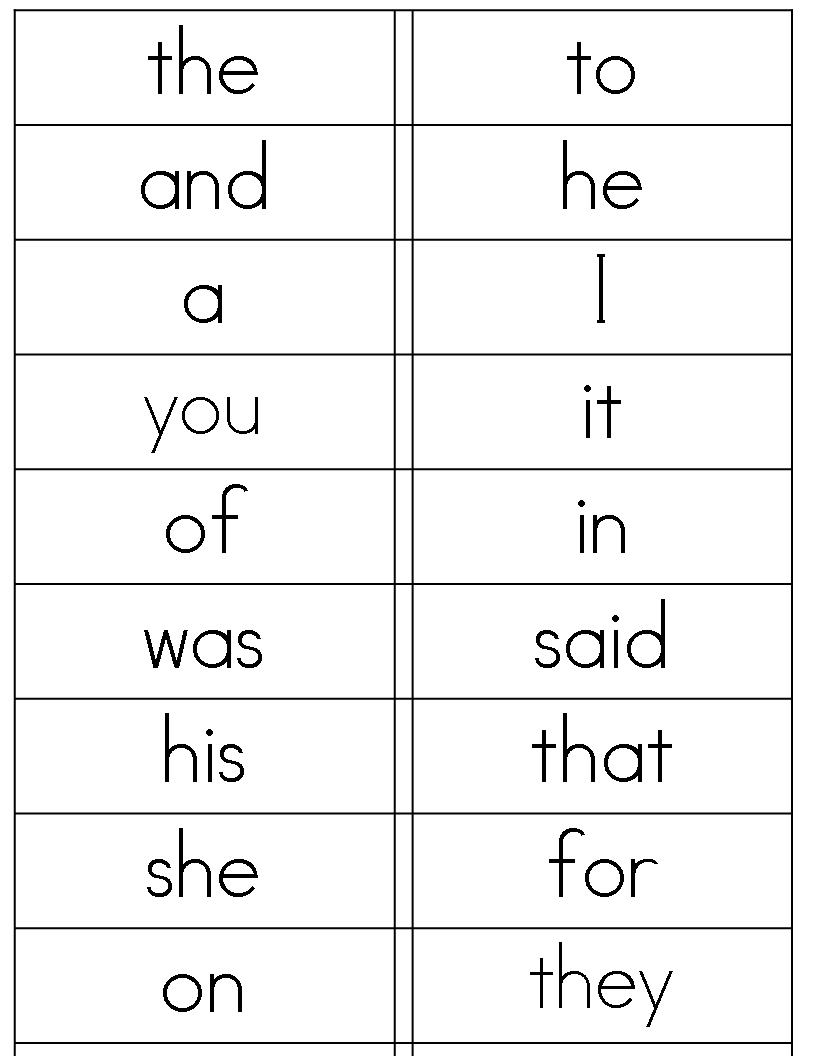
“Effectiveness and Efficiency of Flashcard Drill Instructional Methods on Urban First-Graders’ Word Recognition, Acquisition, Maintenance, and Generalization.” School Psychology Review 37:3 (Fall 2008): 294-308. Cambridge, MA: Educators Publishing Service, 2014. The Gillingham Manual: Remedial Training for Students with Specific Disability in Reading, Spelling, and Penmanship, 8th edition. Enfield, Mary Lee, and Victoria Greene.“Grapheme–Phoneme Knowledge Is Essential for Learning to Read Words in English.” Word Recognition in Beginning Literacy. “A review of selected research on methods of teaching sight words.” The Reading Teacher 35:3 (1981): 314-322. Here is a bibliography of some of the research supporting our approach to sight words instruction: Our sight words teaching techniques are based not only on classroom experience but also on the latest in child literacy research.

Many teachers take existing sight word lists and customize them, adding words from their own classroom lessons. There are many newer variations, such as the Common Core sight words, that tweak the Dolch and Fry sight words lists to find the combination of words that is the most beneficial for reading development. Shaywitz, M.D., Professor of Learning Development at Yale University’s School of Medicine. This list consists of the 150 words that occur most frequently in printed English, according to the Word Frequency Book. The Top 150 Written Words is the newest of the word lists featured on our site, and is commonly used by people who are learning to read English as a non-native language. Learning all 1,000 words in the Fry sight word list would equip a child to read about 90% of the words in a typical book, newspaper, or website. Edward Fry developed this expanded list in the 1950s (and updated it in 1980), based on the most common words to appear in reading materials used in Grades 3-9. The Fry Sight Words list is a more modern list of words, and was extended to capture the most common 1,000 words.

Once a child knows the Dolch words, it makes reading much easier, because the child can then focus his or her attention on the remaining words. The Dolch sight words comprise 80% of the words you would find in a typical children’s book and 50% of the words found in writing for adults.
#Starting sight words plus
The list contains 220 “service words” plus 95 high-frequency nouns. Edward William Dolch developed the list in the 1930s-40s by studying the most frequently occurring words in children’s books of that era. The Dolch Sight Words list is the most commonly used set of sight words. There is a great deal of overlap among the lists, but the Dolch sight word list is the most popular and widely used. There are several lists of sight words that are in common use, such as Dolch, Fry, Top 150, and Core Curriculum.

Memorizing these words with unnatural spellings and pronunciations teaches not only these words but also helps the reader recognize similar words, such as guy, walk, or some. Non-Phonetic Words - Words that cannot be decoded phonetically, such as buy, talk, or come.For example, knowing just the Dolch Sight Words would enable you to read about 50% of a newspaper or 80% of a children’s book. Memorizing these words makes reading much easier and smoother, because the child already recognizes most of the words and can concentrate their efforts on new words. Frequently Used Words - Words that occur commonly in the English language, such as it, can, and will.

#Starting sight words how to
If you are new to sight words, start with the teaching strategies to get a road map for teaching the material, showing you how to sequence the lessons and activities. These pages contain resources to teach sight words, including: sight words flash cards, lessons, and games. Sight words are the glue that holds sentences together. You will also hear them referred to as Dolch words or Fry words, the two most commonly used sight words lists. Other terms used to describe sight words include: service words, instant words (because you should recognize them instantly), snap words (because you should know them in a snap), and high frequency words. Sight Words are memorized so that a child can recognize commonly used or phonetically irregular words at a glance, without needing to go letter-by-letter. Knowing common, or high frequency, words by sight makes reading easier and faster, because the reader does not need to stop to try and sound out each individual word, letter by letter. Learning sight words allows a child to recognize these words at a glance - on sight - without needing to break the words down into their individual letters and is the way strong readers recognize most words. Sight words are words that should be memorized to help a child learn to read and write.


 0 kommentar(er)
0 kommentar(er)
